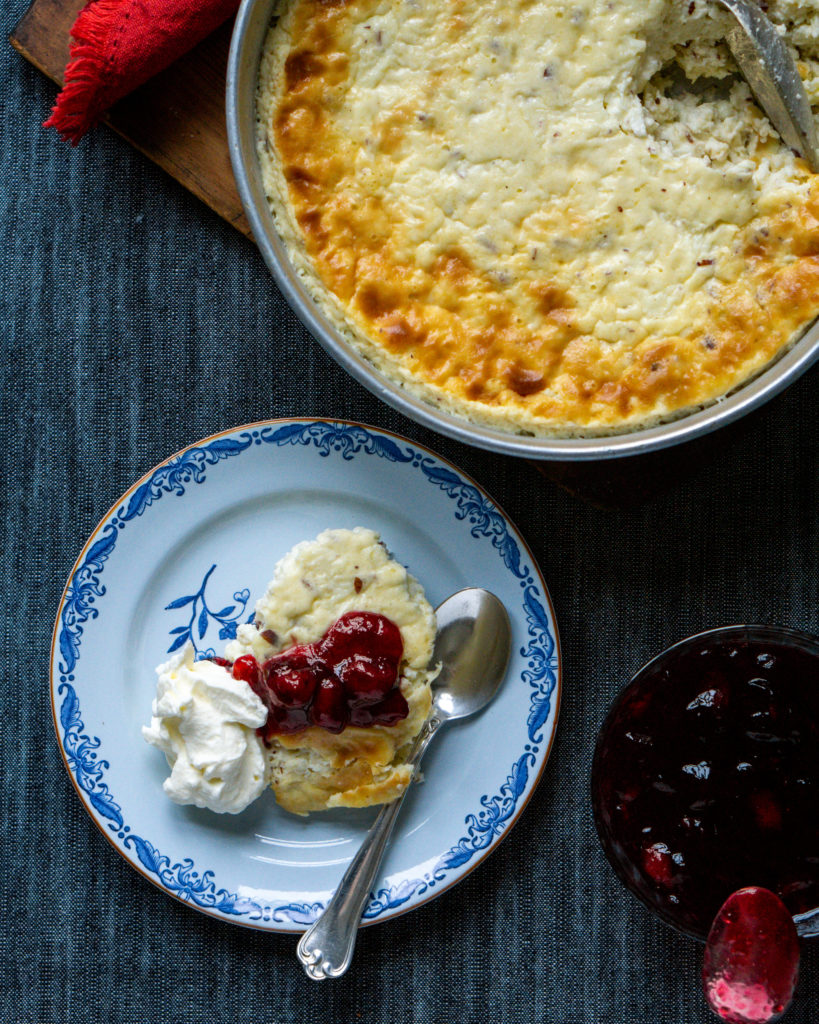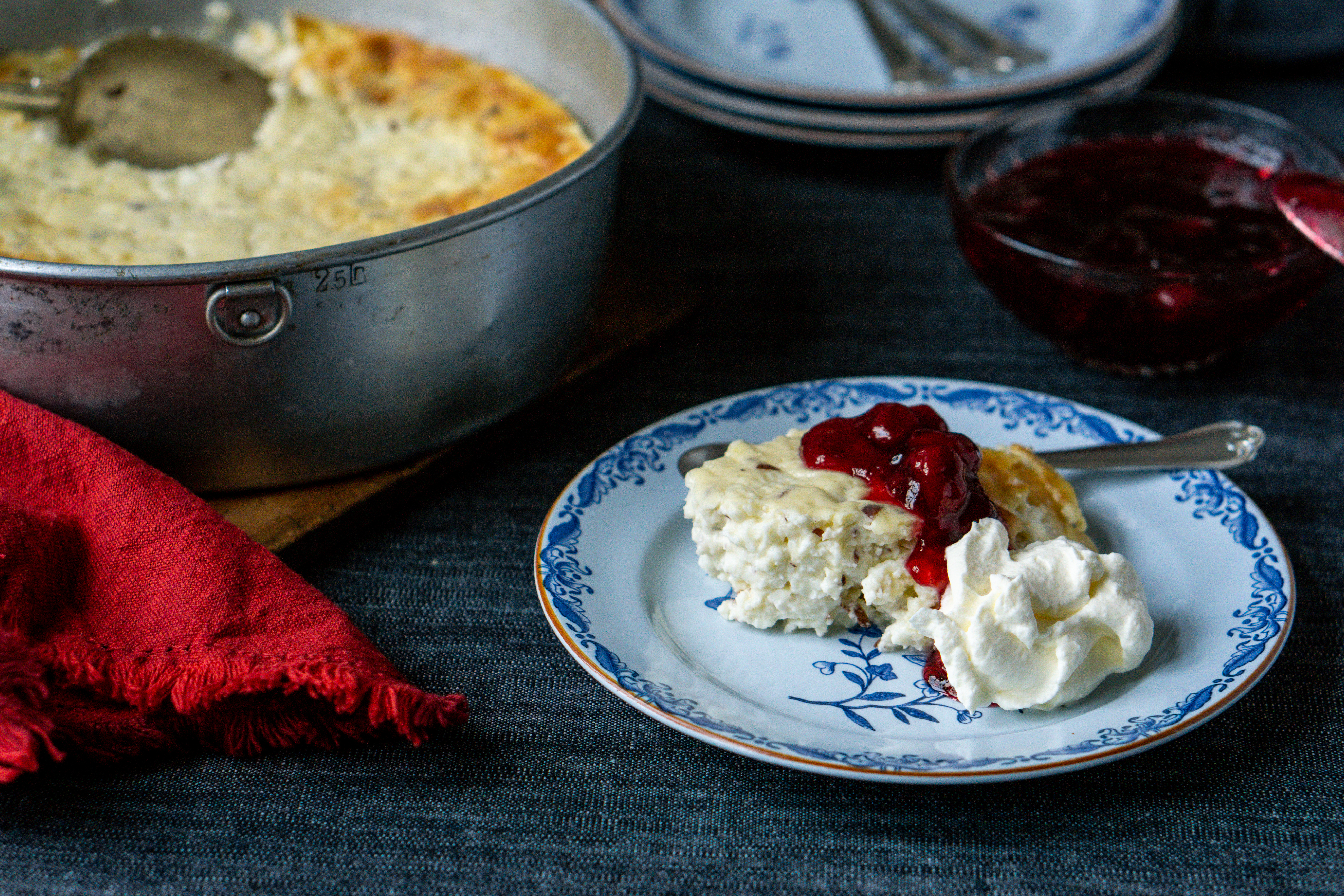As far as I know, Swedish curd cake comes in two versions. This one, from Småland in the south of Sweden, is the most widely known.
The history of Swedish curd cake, or ostkaka
Food historian Jan-Öjvind Swahn doesn’t have much to say on the topic of ostkaka, simply noting that there are two kinds and that curd cake is mentioned for the first time in Swedish in 1538 in a Swedish-Latin dictionary, which was written “probably by our reformator, Olaus Petri”. The dictionary SAOB confirms the name of this book as Variarum rerum vocabula cum sueca interpretatione.
In the 18th century, I find plenty of variations of curd cake. Cajsa Warg’s 1755 recipe for curd cake starts by grating “sweet cheese” and mixing it with milk, breadcrumbs, and egg. Her cake is flavored with cardamom, cinnamon, and sugar.
In Det svenska julbordet, Christina Fjellström and Håkan Liby writes that curd cakes have been an important part of the farmer’s Christmas table, especially from the later part of the 19th century and onwards.
Today, curd cake is popular enough that even has a theme day (14th of November, if you want to celebrate), and a friend society, Ostkakans vänner.

How to make curd cake from Småland—småländsk ostkaka
For this recipe for Swedish curd cake from Småland, you’ll need a relatively large pot, a bit of patience, and a hungry stomach. It is adapted from Magnus Nilsson’s recipe in The Nordic Baking Book. This is enough for about 6-8 people.
3 liters (12,5 cups) full-fat milk (unhomogenized if you can get it)
0,75 dl (0,3 cups) flour
1 tbsp liquid rennet
3 eggs
0,5 dl (0,2 cups) sugar
3 dl (1,2 cups) cream
1 dl almonds
2 bitter almonds
butter for greasing the pan
Serving: jam and whipped cream
- Heat the milk in a large pot until it is 35°C (95°F). Be careful so it doesn’t get warmer, and stir the pot so it heats evenly.
- Put the flour in a bowl and add about 1 dl (0,4 cups) of the milk, and stir until it is smooth and lump-free.
- Add the flour-milk into the large pot of milk, and stir until it mixed in. Add the rennet to the milk and stir. Now, add a lid and let the milk curdle for about 30 minutes. You will see that it has formed thick, dense curd that is spongy to touch.
- Break the curd up into large chunks, and then put the lid back on to let it rest for another 30 minutes.
- Prepare a large colander with a mesh net or cheesecloth and put the curds into the colander. Let it drain for about 30 minutes.
- Put the oven at 175°C (345°F). Grease a large tin, about 2,5 liters (10 cups), or use several smaller ones.
- Whisk the eggs and the sugar together in a large bowl. Add the cream.
- Chop the almonds finely (a few larger pieces are just nice) and grate the bitter almonds finely. Add them to the bowl.
- Add the curds into the bowl and stir until it is well blended. You don’t have to worry about breaking up all the chunks of curd.
- Bake the curd cake in the oven for about 1 hour. It will be golden around the edges and paler in the middle. Check on it towards the end—if the top is getting a lot of color, cover it with a sheet of aluminum foil.
- Serve with jam and whipped cream.



0 Comments